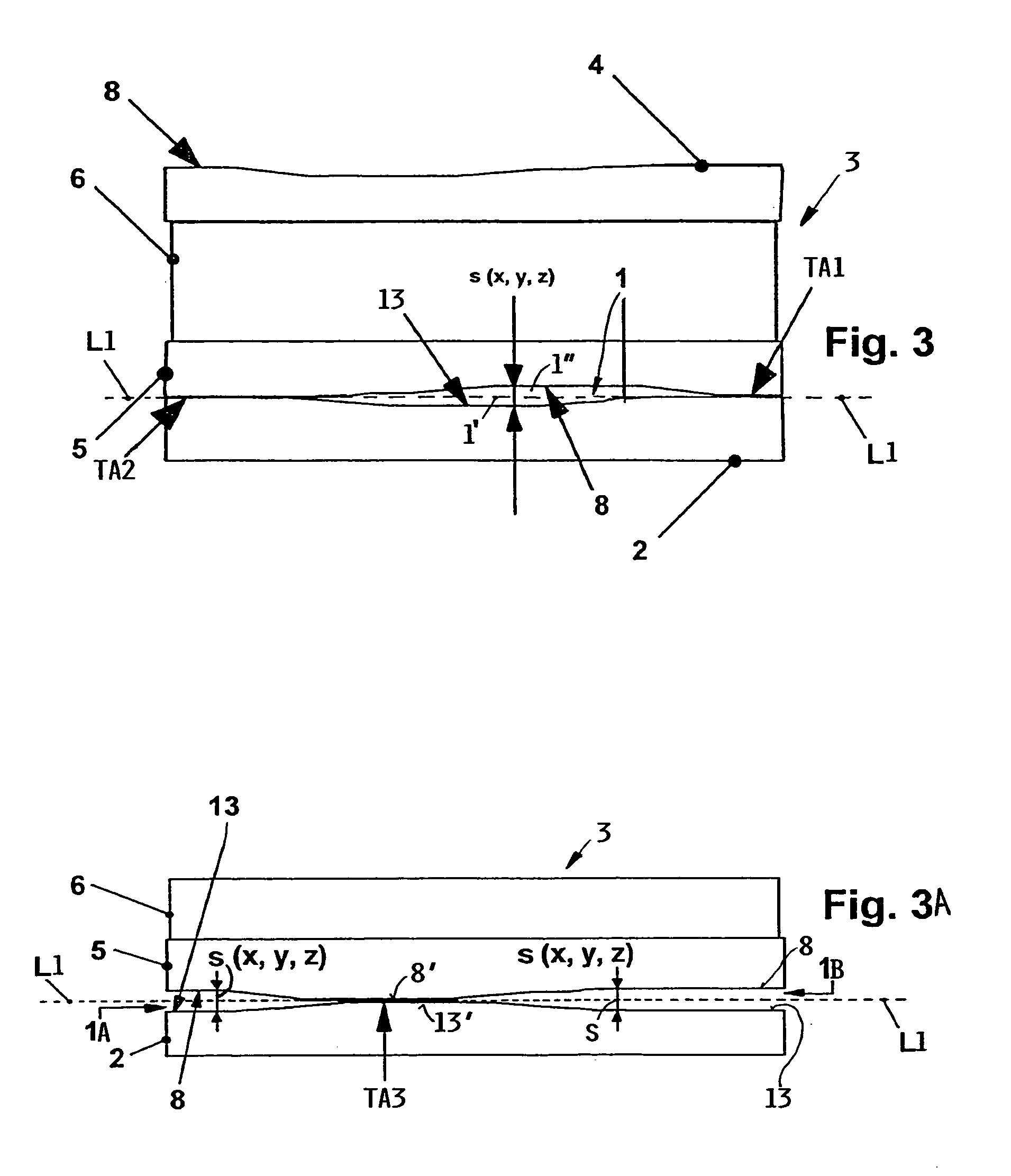Method for avoiding air pockets in a joint between two structural components
a technology of structural components and air pockets, applied in the field of carbon fiber reinforced composite materials, can solve the problems of undesirable joint gaps or air pockets, excessive shim mass, and excessive removal of excess, so as to reduce dimensions, avoid excess filler material application, and small air pockets
- Summary
- Abstract
- Description
- Claims
- Application Information
AI Technical Summary
Benefits of technology
Problems solved by technology
Method used
Image
Examples
Embodiment Construction
[0033] FIG. 1 shows perspectively a first structural component such as a skin or shell section 2 having a relatively thick wall with an inwardly facing surface 9. A portion of the inwardly facing surface 9 of the skin section 2 forms a first joining surface area 13 that will be joined or bonded by an adhesive to a second joining surface area 8 of a second structural component 3 such as a stringer 3 to be described in more detail below. In practice the first and second joining surface areas 13 and 8 are not exactly plane due to acceptable manufacturing tolerances. Thus, it is the purpose of the invention to provide a method to level out or smooth out any topographic irregularities in the surface areas 13 and 8 to avoid the formation of air pockets in the finished joint.
[0034] Without such smoothing or leveling air pockets of various geometric configurations could be formed and it is the purpose of the invention to avoid such faulty gap formations. For this purpose the topography of t...
PUM
| Property | Measurement | Unit |
|---|---|---|
| Current | aaaaa | aaaaa |
| Current | aaaaa | aaaaa |
| Digital information | aaaaa | aaaaa |
Abstract
Description
Claims
Application Information
 Login to View More
Login to View More - R&D
- Intellectual Property
- Life Sciences
- Materials
- Tech Scout
- Unparalleled Data Quality
- Higher Quality Content
- 60% Fewer Hallucinations
Browse by: Latest US Patents, China's latest patents, Technical Efficacy Thesaurus, Application Domain, Technology Topic, Popular Technical Reports.
© 2025 PatSnap. All rights reserved.Legal|Privacy policy|Modern Slavery Act Transparency Statement|Sitemap|About US| Contact US: help@patsnap.com



